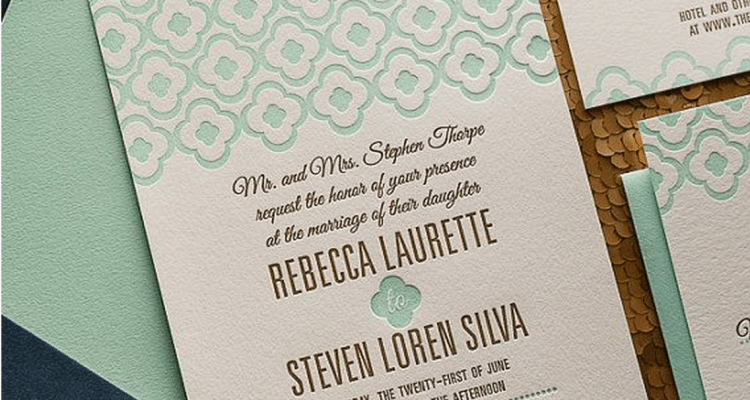Wait for the Date
Of course, the most important information that’s going to appear on your invitation is your wedding details. Don’t order your invitations until you’re absolutely sure your venues can give you the times and locations you asked for. You’ll also want to make sure that your “can’t live without them” guests are free to come on the day you chose. All this checking can save a lot of confusion and re-mailing later on. You wouldn’t believe how many brides end up having to send out two invitations because of just these sort of problems (and how many recipients get confused as a result).
Borrow a Fresh Pair of Eyes
Another common problem: not proofreading the invitation carefully enough before sending it to the printer’s (or printing it out yourself). The problem for most brides is that they know the information by heart. They know it so well that even if there’s a typo or a mistake, they may not see it at all (much like you didn’t see that weird sentence fragment after finishing up your World History essay at four a.m.). It’s important to hand the mocked-up invitation to someone else for proofreading before you have your final invites made. Here’s a checklist of elements to look over carefully for possible errors:
– The date and time of the wedding
– The name and address of the church or temple
– Your names, and your parents’ names
– The punctuation throughout the text
Accurate, carefully-worded information will make a great impression on your guests. More importantly, it helps ensure they won’t miss a minute of your day!
Lead With the Theme
If your wedding has a theme, the invitation is a great way to start your creative juices flowing, while letting your guests in on the fun. For example, if you’re going to have a Wild West wedding, work in some Stetsons and boots imagery. If you’re planning a beach theme, choose an invitation with a gorgeous beach photo floated into the background. You can still get as fancy and use all the vellum you want without losing your theme — just be creative. Of course, not all weddings have themes, but if yours does, be sure to launch the fun with your invitations.
I Say Tomato, You Say To-Mah-To
The wording on your invitation says a lot about the level of formality your guests should expect at your wedding — and your writing style should match the event itself. So if you want a more easy-going atmosphere, feel free to be creative, original and pretty informal both in your font and word choices. But if your wedding’s more of a black-tie affair, use the most traditional language (and traditional fonts). Generally speaking, it’s not such a hot idea to use slang or vulgarity on your invitation, but if your wedding’s going to be more casual and come-as-you-are, then by all means, lighten up the language.
Another aspect of your invitation that can make a big impression and communicate a lot to your guests is the paper you use. A more formal or elegant wedding calls for a finer, linen-style paper with embossed print. Of course, this comes at a price. But if you’re going for a less formal look, and maybe including imagery or attention-getting fonts, you can probably go with a less expensive, less ornate paper and a much less expensive printing process. A good printer will show you lots of possibilities in a variety of price ranges, and these days, you can print some beautiful, sleek-looking invites right off your computer with a handy kit you buy online or at craft stores.
The best way to let your guests know what to expect from your wedding is by sending out an invitation that “talks” through imagery, tone and text. Of course, the critical part is that the information inside is totally accurate, but beyond that, you can assemble a personal style that shows your guests exactly what to expect on your big day.


